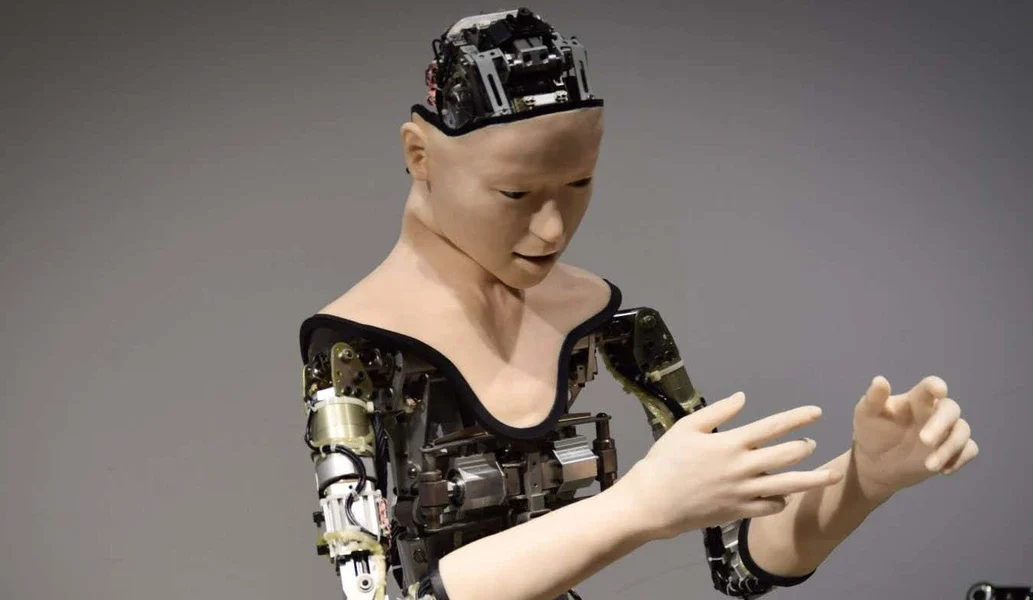humanoid Robot Acts Out Prompts Like It’s Playing Charades
With the advancement of technology, human-like actions performed by robots are becoming increasingly common. A recent development involving a large language model’s ability to translate text prompts into code for a humanoid robot’s movements is particularly noteworthy. Such progress holds great promise for the future of robotics and human-machine interaction.
Understanding the Significance of this Advancement
Imagine a humanoid robot that can interpret text prompts and translate them into gestures and movements. This breakthrough could significantly enhance the way machines operate and communicate with humans. These robots could exhibit behaviors more reminiscent of human gestures and expressions, making interactions more natural and intuitive for people.
Large language models, such as GPT-4, which powers ChatGPT, have demonstrated exceptional proficiency in various computational tasks. However, the translation of text prompts into robot movements has traditionally been a challenging area, given the diverse physical forms and software control systems of different robots.
While these large language models excel in creating computer code, they face difficulties when it comes to generating code for robot movement. This is mainly due to the diverse nature of robots, each possessing its own unique physical attributes and control mechanisms.
Furthermore, the specific code required for robot movement is not always readily accessible on the Internet, posing an additional challenge for large language models. This scarcity of available data can hinder their ability to effectively translate textual prompts into precise robot actions.
The Potential Impacts and Applications
The successful development of a system enabling a humanoid robot to act out prompts from written instructions signifies a significant leap forward in the field of robotics. This advancement could have extensive applications across various industries, from healthcare and Education to entertainment and manufacturing.
Robots that can understand and respond to text prompts by performing corresponding actions open up new possibilities for human-robot collaboration. They could carry out tasks autonomously, respond to verbal commands, and even assist individuals with physical disabilities in their daily routines.
Moreover, the ability of these robots to communicate through gestures and movements could revolutionize the way humans interact with machines. This development has the potential to bridge the communication gap between humans and robots, enhancing the overall user experience and improving the efficiency of human-robot interactions.
In the Entertainment industry, humanoid robots capable of acting out prompts could play a crucial role in creating immersive experiences. They could bring characters to life in theme parks and interactive exhibits, adding a new dimension to storytelling and Entertainment.
Challenges and Future Developments
While the recent progress in enabling a humanoid robot to interpret and execute textual prompts is undoubtedly impressive, several challenges lie ahead. The adaptability of such systems to different environments, the refinement of gesture recognition algorithms, and the seamless integration of text-based instructions with real-time movements are among the key issues that need to be addressed.
Additionally, ensuring the safety and ethical considerations surrounding the use of these advanced robots will be paramount. As robots become more capable of mimicking human behaviors, it is essential to establish guidelines and regulations to govern their interactions with humans and ensure their responsible use in various settings.
Looking ahead, further advancements in Artificial Intelligence and robotics will continue to drive innovation in this domain. The ongoing research and development efforts are likely to focus on enhancing the adaptability and responsiveness of humanoid robots, as well as refining their ability to interpret and act upon textual prompts with precision and efficiency.
Conclusion
The recent breakthrough that allows a humanoid robot to interpret written instructions and perform corresponding movements marks a significant step forward in the convergence of Artificial Intelligence and robotics. This development holds enormous potential to enhance human-robot interactions, enable new applications across various industries, and revolutionize the way machines communicate and collaborate with humans.
As the field of robotics continues to advance, it is crucial to address the challenges associated with incorporating text-based instructions into real-time robot movements. This progress has the power to transform the way we interact with technology, offering exciting possibilities for the future of human-machine collaboration.
Source: newscientist








No Comments